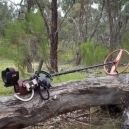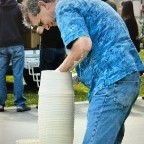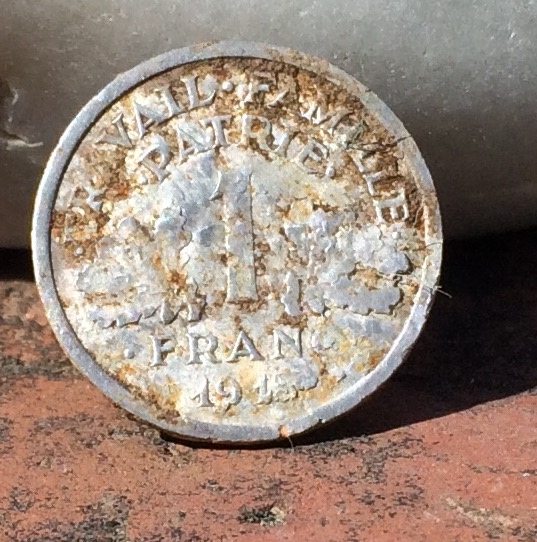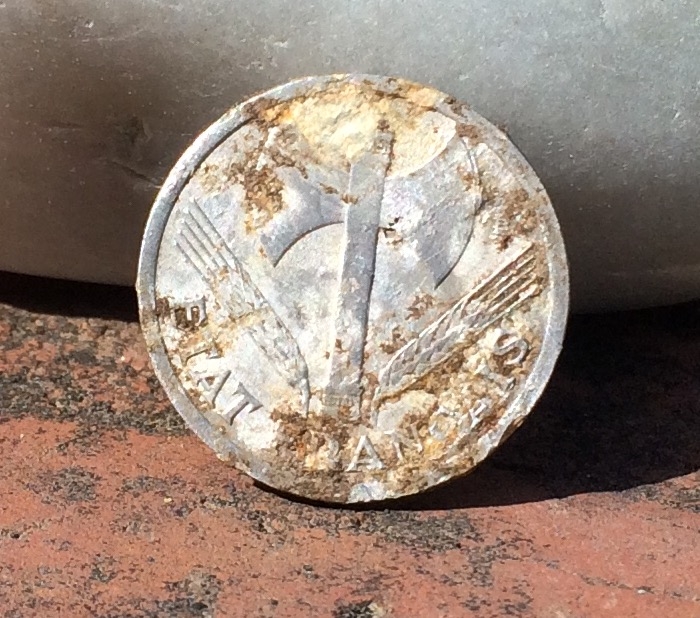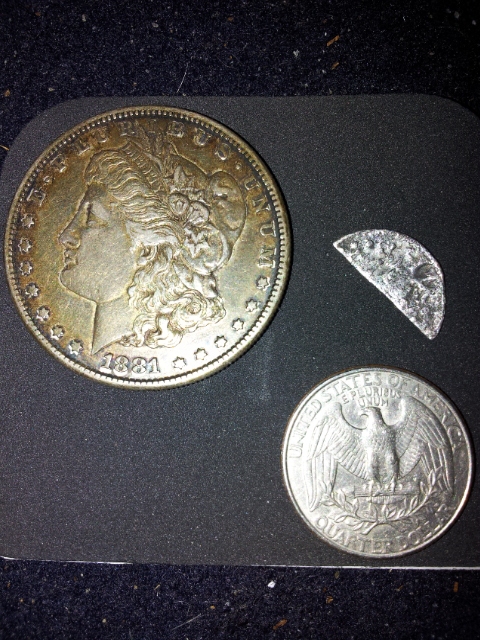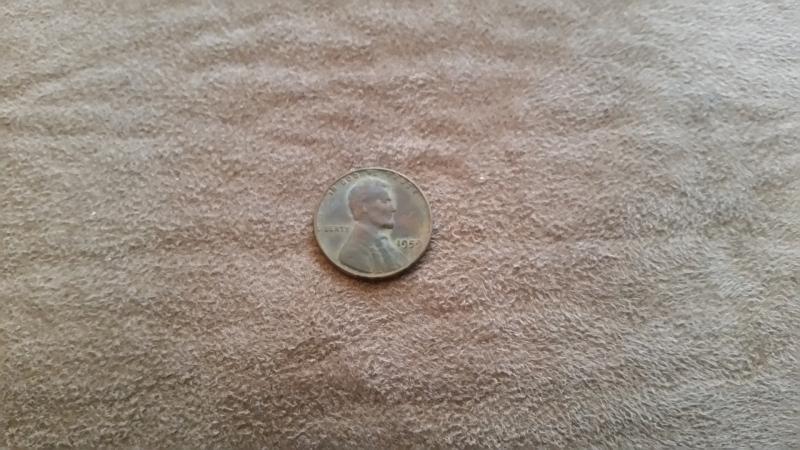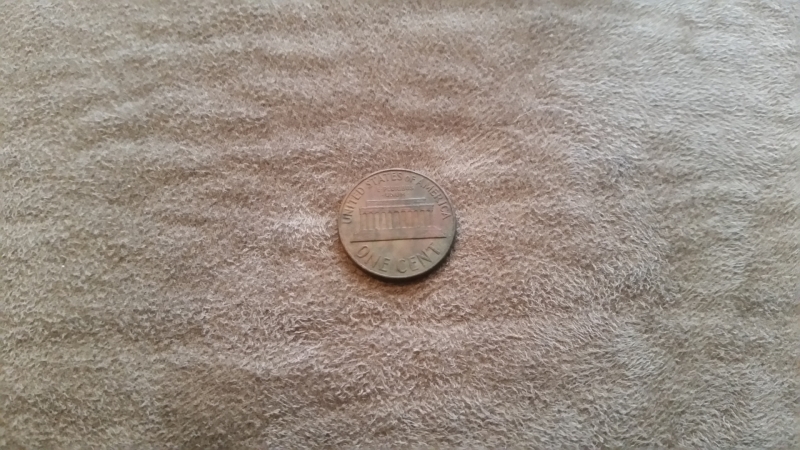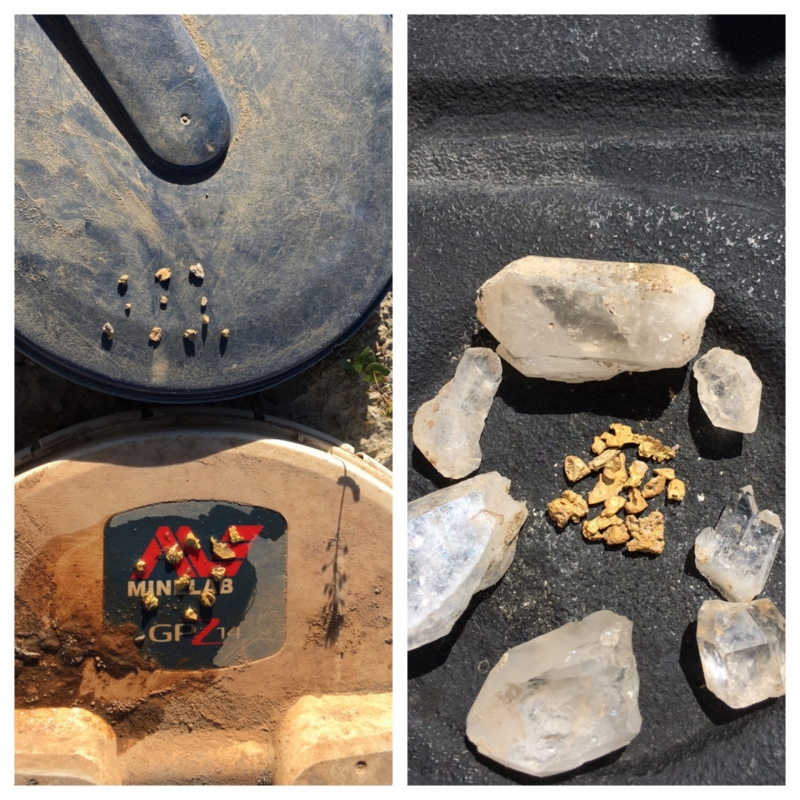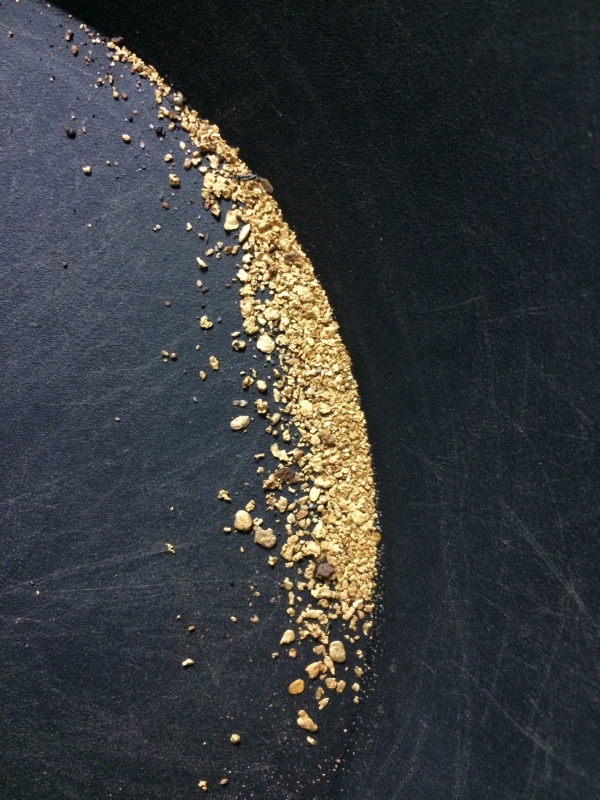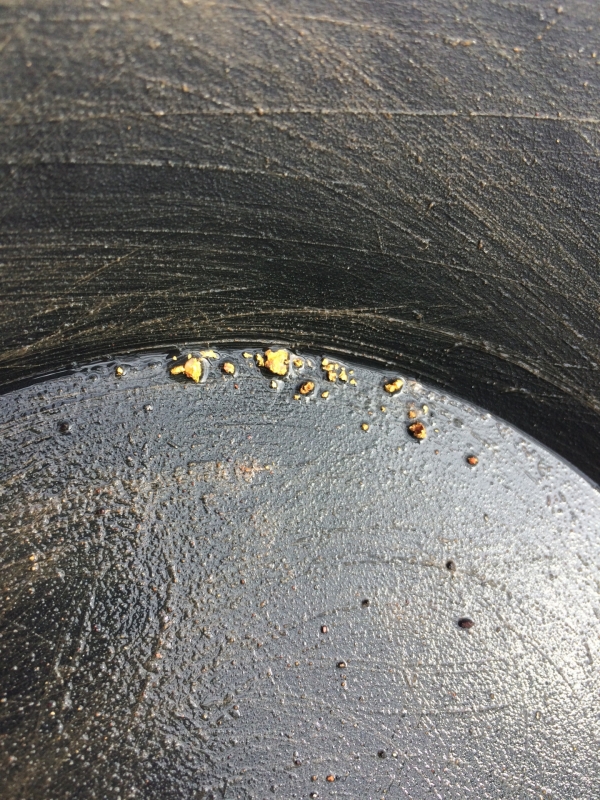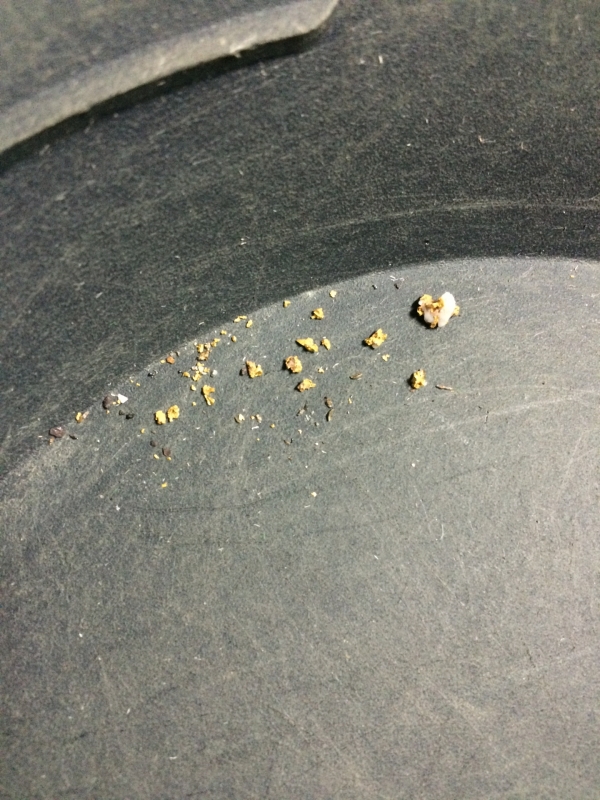Leaderboard
Popular Content
Showing content with the highest reputation on 04/24/2016 in all areas
-
Good buy Terry! Here's a little history on it's previous platform, and just a few tips I managed to teach myself over the years with them. Don't take too much notice when I mention hot ground a lot, they behave extremely well on benign ground as well. I couldn't believe the US relic hunters never took them on, as they hit a three ringer at well over 20 inches on any ground. The discrimination isn't much chop on them, as the disc was only put on them for small surface iron and tin on the goldfields. By the time the Minelab PI's came out, nobody cared any longer about our greatest range of VLF's, most of us were too busy becoming SD mad to bother. Except, I never let a good dog die. So I stayed in touch with my older units and bought new ones, to compare, use, and get them set up properly along side my SD/GP's. How good is the Eureka Gold on hot ground compared to other detectors? That question is quite often asked by those who have a true want for that knowledge, and they deserve a straight answer. Utilising both tracking speeds, when well set up and with the right coils to match the frequency in use, and the right add-ons to make them sing, they are deeper, more versatile, more sensitive and far easier to use on hot ground than any other VLF. Across the entire range of Minelab gold VLF's, there has always been confusion over a proper threshold setting. The often quoted 'just audible' setting of a threshold was one of the main reasons people put VLF's down. Both in the user manuals, users who fling the coil around too fast ...the list goes on. The proper threshold on hot ground, any ground type for that matter, is a nice and high full sound, stable and rock solid threshold that cannot be wavered on that ground type.. Allowing the highest sensitivity they can muster. Causing lovely repeatable dropouts in the threshold on deep signals on heavy ground. Missed by a mile with that 'mosquito buzz setting', the worst throwaway line in detecting. Here is a rundown on the Minelab VLF models that kicked off the Eureka platform. It may be of slight help to those who own or are looking for a gold VLF that does a hell of a lot more than just tickle itself into girl-scout dirt. Goldseekers 15000: Minelab bought an Australian company that had manufactured two decent early VLF's, they then went on to produce the Goldseekers model in the early to mid 1980's. Although the balance had more drift than the later models, they had the most proficient ground balance put on to a detector at that time. They ate our old A2b's. Around 8khz, very tough metal box, 8" round stock coil plus an 11" round. These started the 5 pin coil connector range. Eldorado MK1: A low frequency unit, metal box, looking exactly like the Goldseekers only with green on the box in place of red. No disc, no nonsense, threshold based, and a very stable ground balance. A most underrated unit. They cruised over hot ground a little better than the Goldseekers because they were slightly less sensitive, but held their balance and threshold level a little more stable. They took the large coils well, and were on par with any later model Minelab gold VLF on big deep gold in hot ground. Not very sensitive on the very small gold though. You could size deep coins with this unit too, and the audio and pitch was so good on the machine that you could judge junk against coins by sound far better than any coin discriminating detector on the market at that time, and half of them today. Eureka Ace Dual: We called them Dual Aces because it rolled off the tongue better. This was the one! This green box machine will still out detect any current model Fisher, Whites, Tesoro or Garrett VLF units on truly mineralised ground today. Deep large, shallow and small. That's how good they were. Carrying a twin frequency choice of 8khz and 20khz, they still have the most stable manual ground balance of any VLF ever produced. They were nice and sensitive but still handled heavy ground manually like a champ, a real pleasure to work with. Mounted with a half rounded clip, they could be set up on a straight shaft, upside down on the top of the shaft directly in front of the hand grip, so the ground balance dial was in your right index fingers range. You could ride that ground balance to your hearts content. Eldorado MK11: Another plastic box unit. Yellow in colour and running in 8khz. Made as the cheapest basic gold VLF just to fill the entry level stage. Minelab's worst ever detector. All they had to do was make the ground balance solid and unwavering. Instead, we got the most drifting ground balance ever made, and I mean drifting! And an extremly broad response, that when combined with it's lack of sensitivity, made for a very sour unit. Completely useless for any type of detecting. GT16000: Here starts our Auto ground balance and Auto tracking, along with a microproccesor. 8" round stock coil. Later the 6" little sensitive round and 11". Mounted on the pole with a half rounded clip on. Brilliantly designed units and so far ahead of other manufacturers detectors that it simply left all other units, bar the manual balancing Minelab's, in shock. Although the Auto was breakthrough, some of us preferred the Dual Ace later on as we had full control on running positive balance with them. But a delight the GT still was. FT16000: The FT were similar to the GT, with a slightly faster tracking speed. Some did not like the faster balance, but I preffered it, as the proccessor seemed to function quicker than the GT, and big coils on hot ground seemed to suit it's pickup on ground changes, with a nicer sharpness to threshold dropouts .... and those were the main signal we were looking for. Later the FT would be marketed to America as the Klondike. Both the GT and FT had a discriminator on board. But only escaped mental patients would use the function. Some very impressive large aftermarket coils were made to fit the entire 5 pin range, and then the 4 pin series, thanks to men like Barrie Johnson, Bob Hollins and a few others. They also started the spurn of aftermarket signal enhancers and modifications, because we finally had units worthy of mods, thanks to men like Ken Roberts and quite a few others that had cut their teeth modding early Whites and Garretts. They helped us to tame the hot ground with the 5 pin range of Minelab's. XT17000: Blue plastic box, the first to slide into a stem mounted clip. The second twin frequency unit, this time in 6.4khz and 32khz. Tone dial on the rear being adjustable with a flathead. A nice tracking speed, lovely sensitivity, but you could do more with this unit by the tone dial, and it helped to run a more varying threshold. The coil range starts to really open up from here on in, with the stock 8" round, 6" round, 10" elliptical, 11" round, 17"elliptical. Big round West Australian coils, the list never ended Goldstriker: Red plastic box, Similar to the XT17000. But only ran in 32khz and had the tone dial on the face plate. 10" elliptical stock coil. They played with the signal responses on these models, running a boost, coarse and fine. They all seemed to behave a little differently that the boost, normal, enhance on the other models. I felt they handled a bit too delicately than the 17000's in a few areas overall, and weren't nearly as good a unit. XT18000: Version 1 This early model carried, for the first time, 3 frequencys. 6.4, 20 and 60khz. With the coil choices available on the 4pins, stock 10"x5" or round 8" depending when and where you bought it, the 11"round. The Coiltek 14.5 inch all terrain beauty was and still is, the best large coil for both the 5 and 4 pins ever produced. This first version was by far the most sensitive to date, it had an immaculate ground tracking speed and smoother everything. Nice loud audio. The 60 kHz was so good on these you could actually feel it tickling it's way into to first inch of ground. Unfortunately they would blank out over surface targets or on heavy ironstone outcropping. But this was soon to be changed. The tone dials have always been a bugbear. Those dials can cause added drift on the thresholds audio level. Slight, but annoying. I always felt a solid fixed, but still changeable tone control, would have been a better option. XT18000: Version 11 Minelab employed a fellow from overseas to work with them (Professor Paul) He improved on the original unit, did incredible things with the internals and stopped this blanking out. This unit became the most stable of the platform to date, in every way. A threshold so stable it was physical. This model would later have a major cosmetic and battery system change, along with a twin tracking speed, to became the Eureka Gold. Golden Hawk: They tried something different with this machine. Placing it on an supposedly ergonomic shaft, looking very much like a version of an mini SD. But was extremely un-ergonomic. Mounting the SD looking box clipped under and onto the handgrip. A heavy battery hooked on via a lead in the same way the SD did, belt mounted. All dismantled and folded away in a two foot long zip up carry bag. One lot of accessories, belt pouches, bag etc. came in kaiki, another type you could get came in camo. The same 3 frequency's as the 18000, but with a double tracking speed, and a slow and fast recovery switch. Neither of which seemed to show any real difference in either setting. These had a terrible audio. And came with a dull 8" stock coil. The accessory 15" black coil you could buy for them was probably the worst coil Minelab ever made, a really bad coil. An absolute stinker. Most of the units above ran an enhanced, fine or boost signal setting, apart from the good normal setting. All of those settings other than normal, were particularly bad to use. Enhance upset balance timings, fine was a horrible little sound, and boost would more often that not send the unit into spasms if a crow flew overhead. Here are a few notes that may help some get the best out their Eureka Gold. They are a much maligned unit, as were the previous XT models, due to the introduction of the PI detectors. There was a lot of rather bad instructional hints and recommendations given out by dealers and detectorist's who were more often than not mis-using the detectors and giving bad advise on the use of them on the goldfields. It is no wonder that most people think these units only hit surface to a few inches deep, or cannot be run on hot ground. Here are a few of those terrible pieces of theoretical nonsense: * Having the threshold set low at a slight mosquito type buzz. * Coil off the ground. * Sensitivity lowered when not needed to be. * Fast movement of coil when in motion of swing. * The very idea that these VLF's are somehow not deepseeking detectors on mineralized ground. Here's a few facts that a lot of those part time VLF users never picked up on. The threshold must be set at a high stable level on the ground being detected. The level of mineralization must not be able to waver the threshold! It must remain stable and un-wavering. No mosquito buzzing. You must run these units with an Amplifier! ( they really should have been in-built at the design level by Minelab) The internals of the machine must be heard. The tracking balance's change, as you swing, must be full in your hearing. If you cannot hear that internal balance change, running with the correct height of threshold in the ground you're on, how are you going to hear that ever important drop-out of threshold that a deep faint signal gives, or the very soft rise of threshold that a small shallower targets let's out that isn't quite strong enough to break through and give a clear easy signal. The tracking balance on these units is the best produced by any manufacturer. The only way to ground balance to get the tracking to kick in, is to slowly drop the coil to touch the ground, slowly raise it, back down again and let the tracking balance soak it up. As soon as it does it bites in hard and becomes one with the ground. And that's where the coil has to stay, ever so slightly touching, riding over dirt and sand and rock with the touch of a spider web. Speed of the coil swing should be used in direct correlation both on the ground you're in, and with the tracking speed used. You will hear how fast or slow to swing because you will hear how the internal tracking balance is processing and tracking through the ground. Every time that coil comes off the ground to a few inches in height the tracking breaks and balance tries to re-set. The sensitivity should always remain at it's fullest setting. The only time it should be turned down a touch is when over extremly bad ground. Ground that gets our PI's warbling and groaning. And by running the threshold at the correct height, believe me, there isn't much ground you have to touch the sensitivity down in. You drop that sensitivity level and you drop your depth in half! Wether it's an inch or a two feet, depth is everything. Touch that sensitivity and you touch every signal in a bad way. Coil to match frequency is important on these units. Stock 10"x5" elliptical or Coiltek 6" round for 60khz only. 11" round for 20khz 14.5" Coiltek All Terrain for 6.4khz It is no coincidence that these coil sizes are made for the Eureka. 60khz is not a deep seeking frequency. It simply will not give depth. It tickles nicely into the ground for an inch or so. You can hear how deep it goes if you have those internals right up in your hearing. Use this frequency on the 11" round or 15" round and it dissapates badly. 20khz is the most responsive pound for pound. But beware ....that frequency is not a deepseeker either. 6.4khz. Ahhhh .... All controls set at their premium for the ground your on, and working with the 11" or 15" coil, this frequency is crystal clear and deadly! Don't fool yourself with airtests, this frequency is just as dull in an airtest as the airtest itself is. Or set targets placed into disturbed ground. Both these scenarios are only enjoyed by Vlf's of other brands that don't like to play in heavy ground. This 6.4khz frequency loves giving you notice to metallic targets in undisturbed heavy ground. It's a gold getting sleeper. Tone control on any threshold based unit is so important. Change it to suit your hearing. Change it in certain ground. And change it to understand the differences in 'broadening' a response on a tight signal, and 'sharpening' up a response on a deep target. Both the Fine and Boost settings should never be used on the Eureka. They are not needed and do not 'enhance' a signal in the ground to any benefit, in any frequency, when working ground. I was very surprised the settings were placed on again. Neither Slow nor Fast Tracking speeds, regardless of what the manual states, will NOT track-out a target before or after repeated sweeps. That was just a left over precautionary statement both from the earlier auto balance vlf range manuals, and once they realised the PI's auto tracking could behave that way on feint targets with a mono coil on. In 60khz, you are really only detecting an inch or so for very very small gold, and wait till you have that sound working way up in your hearing, you can actually hear the internals of the machine tickling around every grain of dirt. It will hit on larger pieces deeper of course, but it was made to tickle shallow, not to push a heavy amount of gain through the dirt. As for settings in any frequency, top volume, top sensitivity, the same tracking speed you'd be using on that ground type if it still suits the immediate area, normal signal - never fine or boost, and never in Fixed Balance as both tracking speeds will not be thrown off if the coil swing speed on that immediate ground suits the tracking speed your in. Fixed Balance cannot change for you on a foot long swing, so you will not pick up a soft signal, mainly dropouts of threshold signals, in Fixed Balance when that ground changes, and it will change. You gotta trust that tracking. But just as important is the coverage of sweep. The 14.5" All Terrain coil has a 4" sweet spot at depth, at the centre of the coil. The Minelab 11" around 3". The stock 10"x5" has a queer drawback at depth to it due to the skinny elliptical shape. The 6" Coiltek a nice 1" at depth sweet spot, dead centre of coil, as a round coil should be. I'd probably start a war if I told you the depth difference between one of these in particular that I've set up, in comparison to my gp and sd's. But only with a detectable surface of fingernail size and up. But I can tell you after years of changing coils and frequency's over targets, that I only detect with the 15" in 6.4khz, sometimes in 20khz but not often. And that this combination is the best to use. I only use the Eureka on very hot ground, or to seek deep targets on mullock heaps/tailings. Don't worry at all if pulse induction units have been over the area you are just about to detect. The very same measurement of forward swing applies to our PI coils as it does to the Vlf's. And using a gpx or earlier model PI does not necessarily make a man into a thorough operator, in fact they tend to be much more sloppy in regards to obtaining true ground coverage than those that cut their teeth on Vlf's. Fast tracking is the best mode in all ground I found. Both mad heavy ground as well as smoother deeper ground. It goes about it's buisness quicker and handles the correlation between the other settings in a way that just seems natural for the unit to behave in. Slow tracking (when you have your set-up well up into your hearing of the internals) seems to want to play catch sometimes, it does not feel right in general detecting. Except in 60khz. Slow tracking on any ground suits it because of the much slower movement of the coil you use. Plus the 60khz does not seek deep, so the tracking balance has far less work to do due to lower level of processing it has to do. Searching in 60khz is much like hearing in a miniature world. So the Slow track speed suits the gathering of information at that slow speed of the coil. One thing I really should mention are the types of signals gold gives on the Eureka. The loud signals of close to the surface targets are unmissable of coarse. But gold, being a very low conductor, apart from largish screamers close under the coil, have a lovely 'Dong' type sound on these detectors. It has been that way through the entire range of Minelab gold Vlf's, the XTerrra being the only exception. Here are the signals we must pick up on while we are listening to the unit working, the ground change, and the ever present mineralization in the form of groans, pips pops and squeals. Of which nearly all can be deadened enough to work through the ground with confidence, by having the settings at their best levels over that ground. Depending on coil size and frequency used, the signals below would differ on each combination. Hence our need for different size coils and the frequency used in correlation to the ground we are on ie: ground we think is shallow - meaning you don't think gold would be held deep, deep ground that wouldn't hold gold near the surface, just how heavy (mineralized) the ground is ect. There are 4 types of threshold signals that are made on the deeper gold targets. 1. Threshold Rise: These are the signals that are well under a signal response, so they make a slight rise in threshold, repeatable and excact from all angles, unlike clay domes. Just not a big enough signal due to depth or size, to cause even a slight 'dong'. 2. Threshold Suck: If on the same ground as above, but the piece is a bit deeper, it will draw the threshold down instead, giving the impression of trying to suck it down. But the piece isn't deep enough yet to cause a quick break in the threshold ...a dropout. 3. "Dropout 'Dong' Dropout" When the piece is again deeper than the above, it will produce a very quick dropout of threshold, then a very slight feint 'dong', then the other side of the dropout. It is a nice even signal of it's own. Unmissable. 4. Full Dropout: The piece is deeper again than above, but so much deeper that it cannot produce even a very slight dong. A full quick dropout is simply a nice quick compleat dropout of threshold, pure blank, but only along the deepest part of the DD coil, the centre of it. These are the true deep signals. They come in clear, especially on the bigger coils. They are so clear that you start getting used to sizing the piece by simply moving the coil left to right back from it then forward again. Once you get used to a coil and frequency combination, the judgement of size and depth of a target gets easier. Thankfully we have the most rock-solid 'True' threshold ever designed on a detector to work with. That threshold is everything! Minelab never put on a true high level sensitivity/gain control on the VLF range, only the silly Signal Boost setting. They knew the highest level of Sensitivity needed to keep the units stable and ran with it.6 points
-
When the ground gets nasty, the Eureka shines! I'll add one operating tip, Ground balance in each frequency, starting @ the low end. -Agree on the need of a booster and/or great headphones. -Get the Coiltek 6" round for it. I still use and love the 17000!2 points
-
If it was just for prospecting you made the right choice. The X-Terra is more a do it all machine. Thanks for looking out for me!2 points
-
Ok, you are all too late. I bought the Eurka Gold. It wasn't was exactly what I was looking for but I couldn't allow Steve to buy another detector. I think it ought to be a suitable companion to my GPX.2 points
-
2 points
-
Pretty nice John great coin, when we sold our collection we had almost a full set of Morgan's Missing only two coins the 1893s and it's been so long I forget now the other one, an 1895 I believe. Had a full set of peace dollars and a half dozen rolls of uncirculated matching dates peace dollars, a full set of Jefferson nickels and full set of Lincoln pennies a few old gold pieces some Hawaiian coins, private fractional golds and a pile of Indian head pennies melted together in the remains of a metal box from the San Francisco earthquake and fire. i was 8 years old in school lunch line one day and we had been collecting for a couple of years now so I knew even then the key dates I had asked the lunch lady if I could check the dates of the coins in the till box and spotted an 1893s Morgan in the till. With the innocence of an 8 year old I explained this was a key coin we were missing and asked if I could use my lunch money for the coin instead of lunch that day, she declined my request. When my dad got home from work we went to the bank the school used and checked every silver they had on hand and it was not there. id like to have all of those now of course, but that's how it goes. my grandfather had a transit company and on one visit gave me a moving box full of old baseball cards left behind from some estate in SF, this was the early 1960s hundreds of cards and even mix of what were semi new at the time and old cards with funny looking guys in the pictures most of these were really early, I wasn't really a fan so they just sat in my closet along with every comic book ever printed from the later part of the 1950s up until the fateful day in 1963. I headed up to the sierras to go fishing with my grandparents and when I got home... All gone to the trash... Love to have those back also.2 points
-
1 point
-
1 point
-
I like that idea. It might help out some noobs like me. The penny that I just posted a pic of came up as just that, a penny. And the tree that it was under just look like a good place for stuff to get dropped under. I found a few other pennies, a quater, and some bottle caps as well. In fact, the bottle caps that I found were right next to that 59 penny.1 point
-
Lol Yeah, at that particular park (spenard beach park that is) it seems to have a hardpan layer about 6 to 8 inches down under the topsoil. Even though i found a few junk items in it (right on the top of it), I would think that anything of value would be on top of it. But, I can't say that with certainty. I am not experienced enough to make a call like that nor do I know how many loads of fill may have been dumped there over the years. But here are a few pics of the older penny that I found. Like I said before, it was only an inch or two down next to a spruce tree. I also found my first quarter for this machine (I had found a few with my old one) so that was pretty cool. But no silver. Again, I would like to thank everybody's input on my original question. Lots of good information and entertaining stories have come about on this thread so far.1 point
-
Almost all the coins I have ever dug were 8" or less. 8" - 10" would be crazy deep for me unless I was using a PI.1 point
-
Well, I never dig holes when aluminum detecting in parks personally. I just use a pinpointer and screwdriver to recover targets in the top few inches. Anything my pinpointer can't find I pass on. My goal is to recover as many targets as efficiently and easily - ease being the key - as possible. And with minimal to no visible trace of my being there. There is no lack of these type of targets so no reason to go deep looking for them. When I coin detect and do have to dig plugs I ration the number of digs per location over time. I try to hunt when nobody is around also. I like to be invisible when detecting, both during and after.1 point
-
Ya, they were mine like they would be for any 8 year old... I did trade two rolls of the uncirculated matching date peace dollars to my best friends older brother for his new bike! Both our dads were PO and the deal was reversed in a few days with a couple of (we got yelled at) along the way for good measure...1 point
-
We all hang in there with the possibility it could be cheep' this is whites to remember and I don't think the company have ever been greedy on price you always get your $ worth, well we hopefully won't have to wait too long.1 point
-
My Wife Robin and I, spent several days at Rye Patch at the end March and Beginning of April with some horrific weather that kept us busy at the casinos for two days and then fighting the wet ground noise after the snowmelt. We ended up with a 1/4 ounce of hard earned nuggets, but discussed we need to find some new spots, which I agreed. Well the weather looked great, so I loaded up my truck and headed out on 15 Apr and back home on the 18 Apr. This trip was getting back to the basics as I know them, as to finding productive ground. Sleep in the back of my Mega Cab Dodge, swings my coil for as long as I could stand it, eating cold fried chicken and a treat myself to hot coffee in the morning...I try to keep it simple...lol. I was joined by a couple of other prospecting Buddy's that stayed in town. They arrived to my spot by the time I washed down plenty of hot coffee to fight the morning chill of the high desert. We swung our coils low and slow for miles and ran into 3 small patches, that we can expand and piggy back off of for the next hunt(s)! I'm happy to be home where I can fully stretch out for a good nights sleep...getting old, for the Back to Basics hunt. But they can pay off in the long run. Below, is Joe from Colorado (Colorado Joe) SDC 2300 and my GPZ 7000 on the end of the first days hunt and then my end of trip poke, which just got over 1/4 ounce. I'm recharging for the next trip and more good times with our friends. Until the next hunt! Rick1 point
-
Yeah, I have noticed when I get a strong, clean signal, the vdi is usually accurate. It is when it jumps around that things can get a bit iffy. And when digging in the sand that they use in some of the playgrounds around here, the signal can change as material is removed from the top of the target. Sounds like me digging up a few nails, beer cans, and beaver tails the other day.1 point
-
Thanks Fred. this is a picture of the total gold from that area mostly that hole' & some from sampling' 3.5gram. the other pictures are sampling to our current spot where we actually have found an old reef leader' hoping to get out in the next few weeks the bottom picture with the specimen is about 5 buckets for 1/2gram.1 point
-
I'm in the same boat as you in that I'm looking or a beach detector. Only thing I can advise is that if your beach is as trashy as our NC beaches I would not go with a ATX or any PI detector. I have used them there a few times and it's futile as the amount of trash in the sand is enormous there. Bobby pins, screw caps, crushed cans, pull tabs and lots of iron at depth. So get a good discriminating VLF machine. However if your beaches are not trashy the ATX would be the ticket!1 point
-
You have two issues on most beaches. A detector can see salt as a conductive signal, exactly the same signal as small gold or large but very deep gold. A detector also sees the ground which with most beaches means magnetite. A single frequency detector can ground balance to a single point, either the salt signal or the magnetite signal, but not both at once. Some single frequency detectors can't actually ground balance to the salt range at all so having an expanded ground balance range is one way to deal with the issue. On low mineral beaches this works ok but with more mineralized beaches you have a problem as you can ground balance to salt or magnetite but not both at once. To get around this many single frequency machines have a "salt" mode that allows the salt range to be eliminated by simply discriminating it out while the unit is ground balanced to the magnetite content. Multi frequency machines can ground balance two channels, one salt, one magnetite. Better for most situations. In either case you eliminate the salt signal, and any gold that reads in the salt range, like most micro jewelry (thin chains, ear rings, etc) or weak signals from items at borderline depths. PI detectors do the same automatically by the nature of the way they work. This problem is essentially unsolvable using metal detectors based on electromagnetics. The simple answer therefore is any mid frequency machine with a "salt" or "beach" mode will do the job, as will some machines that have an expanded ground balance range. They generally work very well on drier sand and get more problematic in the water. Salt content actually varies widely at different beach locations and so what works well for one person in one location may not work well in another, especially as magnetite gets tossed into the equation. A properly designed single frequency machine on a clean white non-magnetic beach can do just as well if not better than a multi frequency machine for depth. But as you add magnetite to the beach the inability to deal with two issues at once gives the multi frequency machines the edge. Personally I would never use a single frequency detector actually in salt water so can't help you there. Conversely, I would be happy to use most any of them out of water on the beach itself. It would just depend on what I owned at the time. For me a list boils down to: 1. A pulse induction machine (dig everything) 2. A multi frequency machine (where there is too much junk for PI) 3. A single frequency machine (on beach out of water) In my case personally based on current collection: 1. Garrett ATX 2. Minelab CTX 3030 3. Makro Racer 2 Those are just my detectors. Others could substitute and do as well. I don't wait for machines that don't exist yet. Pulse Devil fans have been waiting ten years. What will not change is if you tune out the salt signal, certain gold and other jewelry signals will be lost also.1 point

